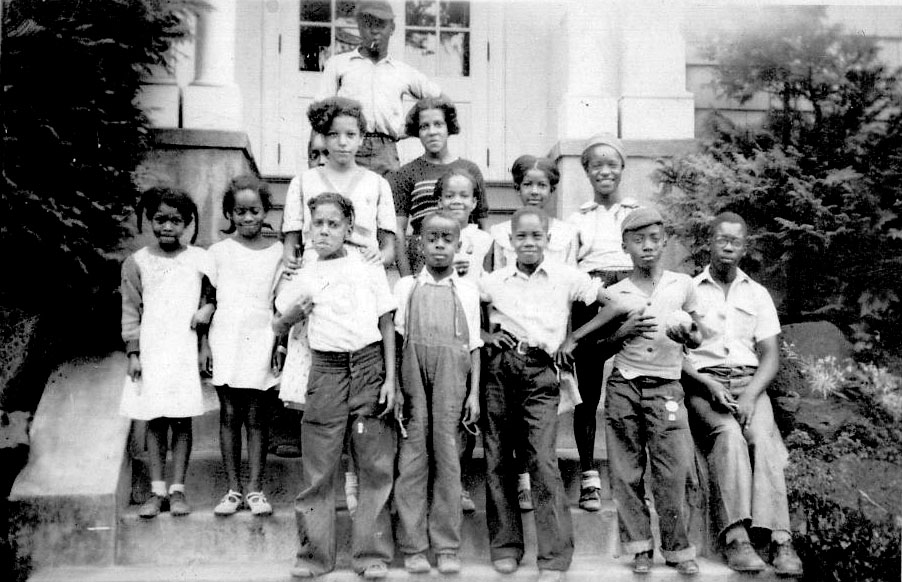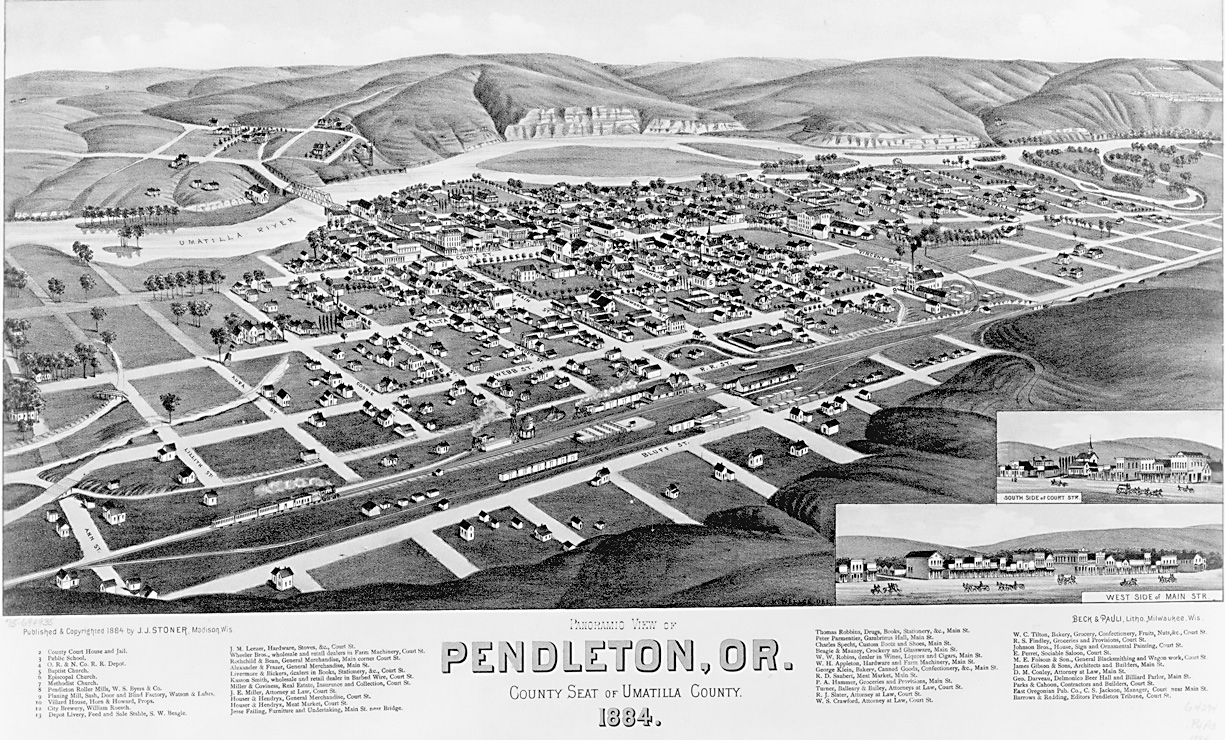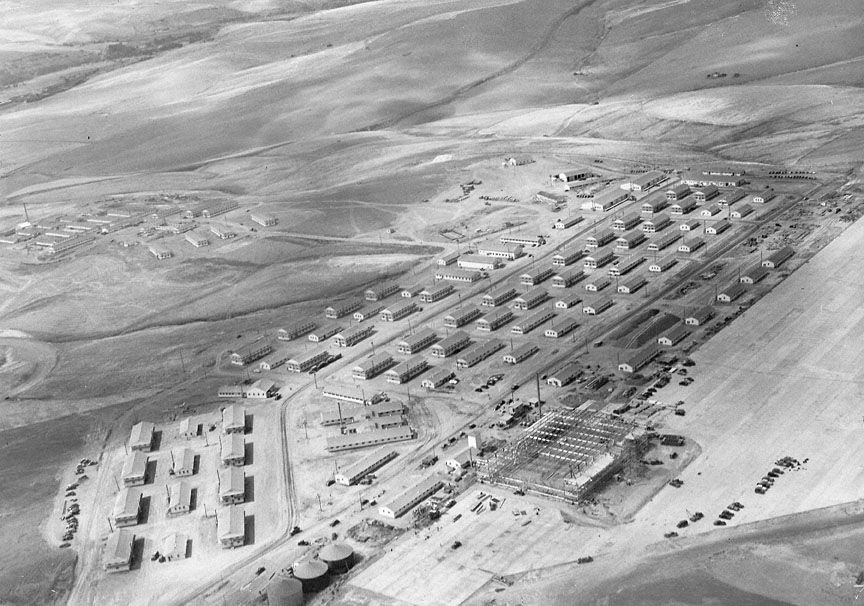The 555th Parachute Infantry Battalion, nicknamed the "Triple Nickles" (using the English spelling of 'nickel'), was a World War II African American unit of the U.S. Army stationed in Pendleton in 1945. The battalion, first organized in November 1943 at Fort Benning, Georgia, was made up of voluntary transfers from other organizations. Created when the U.S. military was segregated by race, the 555th was the only African American parachute unit.
The distinctive insignia for the 555th was a white parachute with a black panther crouching on top. According to Lt. Col. (ret.) John Cannon, "We were the first Black Panthers because that was our emblem, the black panther."
At Fort Benning, the unit's Black officers and sergeants were not welcomed in the base and noncomissioned officers' clubs. After demonstrating that they were capable paratroopers, the Triple Nickles trained, worked, and ate together with some degree of solidarity with their white counterparts. Off-base, they continued to encounter discrimination, segregation, and police abuse.
The company transferred to Camp Mackall, North Carolina, in July 1944 to train for duty in Europe. By April 1945, however, the German armies were collapsing and the unit made a permanent change of station to the army air base at Pendleton. Their mission was to recover and dispose of Japanese balloon bombs and to suppress the forest fires the bombs started. The "Fire-Fly Project," as it was called, was experimental and a tightly guarded secret.
The 555th continued to experience racism in Oregon. The base commander made it clear that he disliked having an all-Black unit, and it was reported that only two Pendleton bars and one Chinese restaurant would serve unit members. The unit spent most of its time on base, learning how to disarm bombs, use a new type of parachute, fight forest fires, and survive in remote forested areas.
A detachment of the 555th went to Chico, California, where it responded on July 14, 1945, to the unit's first fire call to suppress a blaze on the Klamath National Forest. Through the rest of the season that year, the unit fought fires in Oregon, California, Washington, Idaho, Montana, and Canada. They located fire bombs, exploding some and retrieving others for intelligence personnel. They also participated in a training mission for navy pilots, staged a Fourth of July demonstration jump, and attended the Pendleton Round-Up.
By the end of the 1945 fire season, the 555th had participated in thirty-six fire missions with more than 1,200 individual jumps. PFC Malvin L. Brown of Narbreth, Pennsylvania, was killed when he landed in a tall tree and fell 150 feet.
The battalion was assigned to Fort Bragg, North Carolina, in October 1945 and became an integral part of the 82d Airborne Division. On September 11, 2008, three former Triple Nickles were honored in a ceremony at the Oregon National Guard's Pendleton Aviation Support Facility. The conference room at the facility was dedicated and named for the 555th Parachute Infantry Battalion.
-
![U.S. Army Chief of Staff General George W. Casey Jr. (l) with Roger Walden, one of three survivors of the original "Triple Nickles" unit, March 25, 2011.]()
Triple Nickles, 2011.
U.S. Army Chief of Staff General George W. Casey Jr. (l) with Roger Walden, one of three survivors of the original "Triple Nickles" unit, March 25, 2011. Photo D. Myles Cullen, courtesy U.S. Army
Related Entries
-
![Black People in Oregon]()
Black People in Oregon
Periodically, newspaper or magazine articles appear proclaiming amazeme…
-
![Pendleton]()
Pendleton
Pendleton, a city of 17,107 in the 2020 census, sits in the foothills o…
-
![Pendleton Field]()
Pendleton Field
On November 29, 1940, the War Department announced that Pendleton, Oreg…
Related Historical Records
Map This on the Oregon History WayFinder
The Oregon History Wayfinder is an interactive map that identifies significant places, people, and events in Oregon history.
Further Reading
555TH Parachute Infantry Association, Inc. "The Triple Nickles." The 555th Parachute Infantry Battalion 1944-1947. http://www.triplenickle.com/
Biggs, Bradley. The Triple Nickles. Hamden, CT.: Archon Books, 1986.
Cockle, Richard. "Reunion Honors Black Airborne Unit." Sunday Oregonian, September 7, 1997, p C10.
McGarry, Thomas W. "Black Airborne Unit Landed in Eastern Oregon in the 1940s." Special supplement. The Skanner (Portland, Ore.), February 23, 1994, pp. 1-4.




